Christmas Around the World: 19 Traditions to Inspire You!
Did you know that some cultures such as Macedonians don’t exchange presents for Christmas? Yes, that’s right! In Macedonia Christmas is all about the family and cherishing what you already have so exchanging gifts is not part of the old customs.
Table of Contents
What Is the Origin of Christmas?
The origins of Christmas as we celebrate it today are somewhat confusing. There are different records in different religions so it cannot be pinpointed to only one original source. However, some notable ones say that Christmas day is the day celebrated as Jesus’s birthday. The exact date varies with the cultures, but Americans celebrate it on December 25th.
The English name “Christmas” was derived from “Mass on Christ’s Day” depicting the liturgical mass that we held on Christmas when believers gathered to celebrate the birth of Jesus Christ. The name Christmas is not unanimous as well. For example, in Spanish it’s called Navidad, in Itailian – Natale, in French – Noël, in Russian – Razdestvo, in Macedonian – Bozhikj and so on, but they all denote nativity.
However, as Christmas spread around the world, different cultures added different elements into the tradition thus making Christmas more of a secular holiday today, that is celebrated by every religion and not just Christianity.
Some favorite customs performed around Christmas include decorating a Christmas tree, exchanging gifts, knitting fir tree wreaths, etc.
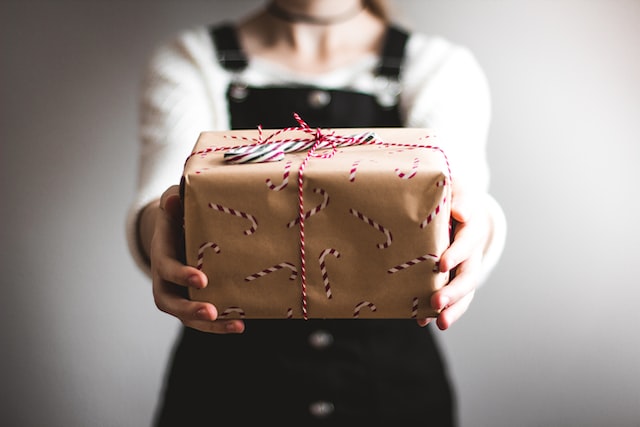
Celebrating Christmas Around the World: 19 Traditions to Inspire You!
Getting familiar with how cultures around the world celebrate Christmas may derive from various reasons and purposes. Perhaps, you wanted to make something different this Christmas, or you’re having or visiting friends from other cultures, perhaps your loved one is celebrating Christmas differently. Whichever the reasons, you’re at the right place. Find out more details below:
1. United States
Christmas is celebrated through a number of traditions in the United States of America. It starts with choosing and bringing the Christmas Tree home and decorating it with your family. Gifts are placed under the Christmas Tree to be opened either on Christmas Eve or on Christmas Morning. There’s also the traditional Christmas dinner when all the family members join to feast together. The main dish usually differs depending on the family’s nationality but it can be chicken, fish, and various soups and salads along with homemade cookies.
Some families have a family tradition of decorating cookie houses for Christmas and drinking Eggnog. Sending Christmas cards, singing carols and attending community lighting of Christmas Tree and Christmas mass are a few other.

2. United Kingdom
Christmas traditions in the UK are almost the same as in the USA but here are some that are unusual:
- Putting a coin in the Christmas pudding to symbolize luck to whoever finds it.
- Pulling Christmas crackers to find a small gift, a party hat and a riddle or a joke.
- Eating mince pies (the traditional UK pies without mincemeat despite the name) or leaving them for Santa Claus along with a carrot for his reindeer.
- Preparing boxes with charitable donations for the poor.
- Hanging stockings on the hearth to be filled with candy.
- Placing a Misletoe and kissing under it.
3. Japan
Out of them all, Japan has perhaps the most extraordinary Christmas tradition. Unlike other countries that celebrate Christmas by gathering the family and cooking homemade food, as of 1974 Japanese celebrate Christmas by ordering KFC! Yes, you read that right!
Namely, KFC’s marketing campaign that ran under the name “Kurisumasu ni wa kentakkii!” or “Kentucky for Christmas!” was so well-accepted that it turned into tradition in Japan. Nowadays, Japanese families can book their meal as early as 2 months in advance or wait for hours in line to get their food.
4. China
Christmas is not an official holiday in China, but it is still observed as a public holiday. Although the Christian population in China is not large, they still adhere to their Christian roots and celebrate Christmas also called Sheng Dan Jieh or Holy Birth Festival. They share the same custom of gift exchange and decorating a tree (Tree of Light) but the ornaments include evergreen plants, posters, bright paper chains for the tree, red pagodas for windows and paper lanterns for lighting the house.
5. Philippines
One especially famous Filipino Christmas custom is the Giant Lantern Festival in San Fernando that features giant dazzling lanterns that symbolize the Star of Bethlehem. These lanterns are so mesmerizing that they made San Fernando known as the “Christmas Capital of the Philippines.
Another interesting tradition is the Christmas drum rolling on the streets of Batanes to awaken the citizens for the dawn mass. Apart from these specific customs, Filipinos also decorate Christmas trees, send greetings cards, sing carols and await the coming of Santa Claus.
6. Germany
Just like the other cultures, Germany also hangs stockings that are to be filled with candy and coins. But instead of on Christmas Day, in Germany these are filled on December 6th which is St. Nicholas’s Day. And if St. Nicholas fills the stockings of the kids who were raised properly and behaved well, Krampus is there to scare the children who have misbehaved. Namely, Krampus Nicht is celebrated the day before St. Nicholas when Germans dress up as horned devils and roam the German streets.
Talking about German Christmas traditions would be incomplete without mentioning the German Christmas markets. Tourists from all over the world come to see the wonderfully decorated stalls in German major cities and feel the Christmas spirit and atmosphere. You can buy presents, go ice skating, and satiate your thirst with a glass of mulled wine and a German Bratwurst.
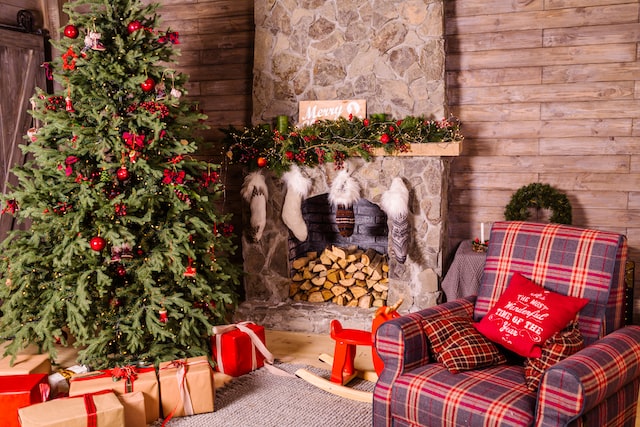
7. France
France celebrates Christmas on December 5th with French Christmas traditions including church bells ringing and singing carols called noels. However, there’s a region in France that celebrates Christmas the best – Alsace. Menus vary, but include chestnut-stuffed turkey, goose, oysters, and foie gras and caviar. In spite of this, the French aren’t as crazy about Christmas as the other nations so you won’t see holiday color-coded families, or exchanging cards.
8. Italy
One of Italy’s most popular Christmas tradition is the Naples Nativity scene. This popular tourist destination features a replica of the stable from which Jesus was born, and tourists can visit during Christmas to see the elaborate set up and enjoy delicious food and desserts. In Italy, children believe in Santa Claus and Befana, a very old woman who brings candy to good children and charcoal to bad ones.
Milan and Verona are two other Italian cities that celebrate Christmas traditions with loved ones close by. In Milan, 5th January is the main day for celebrating Christmas. Children wake up on Christmas morning to find a present from Befana – an old woman dressed like a witch who hides presents around the house in anticipation of children’s reactions when they wake up on Christmas morning.
9. Spain
Catholics in Spain may attend midnight mass to celebrate Jesus’ birth, and Spaniards often spend vast sums of money at Christmas time. Families get together and compete to win huge sums of money at Christmas, making it a very special occasion for them all.
In Spain, there are many traditional dishes at Christmas dinner, such as ham with garlic and spices (served with a bread sauce), roast leg of lamb, paella (a Valencia-style rice dish), and montaditos (savory little pies made of croissant dough). On Christmas Eve, families often eat tapas (light snacks) such as sherry-marinated olives or crisps with anchovies.

10. Sweden
The Yule Goat is a Swedish tradition that dates back to at least the 11th century. Every year, the goat is built in the same spot and is easy prey for vandals who set it on fire. The Yule Goat became popular for young men to dress up as it and run around demanding gifts in the 19th century. Although the tradition has changed quite a bit over time, the giant versions of these ornaments are still created out of straw and red ribbons.
In regards to Christmas dinner, in Sweden, for example, people traditionally have a dinner called “julbord” at which they enjoy dishes such as saffron buns called “lussekatter.” The 1958 Christmas special “Kalle Anka och hans vänner önskar God Jul” is about Donald Duck and his friends wishing you a Merry Christmas. More than 40% of Sweden watches Donald Duck’s Christmas special every year and the tradition dates back to the 1960s when televisions were a new commodity in Sweden and only two channels aired – one of which played Disney cartoons at Christmas.
11. Iceland
The Christmas traditions around the world may be varied and fun, but some in Iceland are a little bit scary. For example, in Iceland people celebrate Christmas by going ice fishing. This is a dangerous activity because if someone falls through the ice they may be unable to get back up and could end up freezing to death. Additionally, Icelandic Christmas traditions are often associated with danger, such as when people wear costumes that make them look like monsters or when there is a giant cat roaming the countryside at this time of year. These Halloween-like customs make for an exciting but spooky time of year for Icelanders!
The most popular Christmas tradition in Iceland is going out for dinner with family and friends. Families gather to exchange books and spend time together reading The Bokatidindi during the week leading up to Christmas. Horse meat is an unusual tradition that you’ll have to experience to believe!
12. Denmark
The Danish people celebrate Christmas on December 24th, with traditions such as preparing delicious meals and buying gifts throughout the month of December. Although initially the Danish celebrated the coming of brighter days called jól, it gradually transcended into a Christmas celebration. What the Danish do differently from the rest of the world is that they decorate their houses with superstitious ornaments called nissers. They also put the Christmas tree in the middle of the room and dance and sing carols around it.
13. Russia
Russian Christmas traditions differ from those in other countries, particularly in how religious the holiday is celebrated. Russian Christmas is a very special time for families, with many activities planned together such as Masses and party preparations.
14. Ireland
Christmas in Ireland is celebrated by singing carols outside and candle-lit events. Families put up a Christmas tree and decorate it with lights, flowers, and paper chains. Christmas traditions in England vary depending on where in England people live. Children in Ireland write a letter to Father Christmas and toss it into the fire.
Christmas dinner in Ireland features roast pork with potatoes and gravy as well as Irish soda bread (a type of bread that’s very thin). Santa visits homes on Christmas morning delivering presents to children who have been good during the year.
15. Macedonia
Christmas in Macedonia is celebrated on January 7th when relatives visit each other to spend time together. However, the main customs for Christmas are performed on January 6th. In the morning, little children go around the neighborhood singing carols and waking up the housewives to reward them with candy, nuts, and some coins. Then in the evening the whole family gathers to eat and share a bread with a coin in it. Whoever gets the coin is considered to be the luckiest one for the year.
16. Poland
Polish Christmas tradition involves cooking a variety of dishes to represent the 12 apostles. The star dish is the carp, which is meant to bring good fortune. Santa Claus in Poland comes to children on the 6th of December, and leaves them chocolates and sweets in a Christmas stocking. The tradition of St. Mikolaj comes from Turkey and is about a very generous bishop who always gave food parcels to the poor. Polish Christmas traditions vary from region to region, but all involve some kind of gift-giving at some point during the holiday season.
17. Portugal
The Portuguese celebrate Christmas on 24th of December. Families put up a nativity scene (presépio) and exchange gifts after attending a Christmas service. In some towns and villages, the community gathers around a fire to celebrate Christmas and wish each other “Feliz Natal” before Christmas Day. The “Christmas bonfire” is made of fir tree trunks and is lit before the start of the “rooster mass.”
In Portugal, there’s one tradition called Festa dos Rapazes and during this celebration groups of boys go from house to house asking for donations or food. This tradition is specific to Portugal and has been going on for hundreds of years. Portugal’s delicious Bolo Rei and Rabanada are also traditional Christmas dishes that are enjoyed by many people all over the world. If you’re looking for some amazing cheap flights to Portugal, book now!
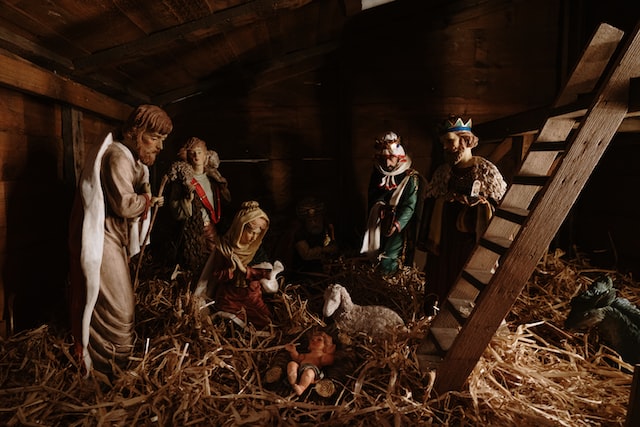
18. Ukraine
The Ukrainian Christmas spider tradition is a happy story about giving. Allegedly, there was a family so poor that they couldn’t afford to decorate the Christmas tree. The spider that were living in the house took pity of the family and on Christmas morning they woke up to a dazzling scene of a Christmas tree decorated with spider webs.
Besides this folk tale, Ukranians celebrate Christmas on January 7th when they dress up in folk garments and walk around town streets singing and dancing. They also treat themselves to the traditional dish called “kutya“. Some families even throw a spoonful of “kutya“ in the air and if it sticks to the ceiling it means that the new year will be a fruitful one for them.
19. Mexico
The traditional Mexican Christmas is one of the most brilliant celebrations around the world. Locals display elaborate Nativity scenes throughout the Christmas season. Nacimientos are public displays designed by local artists and craftspeople. Christmas is celebrated around the world in different ways, but one thing that is common is the desire for peace and goodwill among all people.
Mexico celebrates Christmas with a Mass called La Misa Del Gallo. Mexico has a lot of customs related to Christmas, such as ringing bells at midnight on Christmas eve.
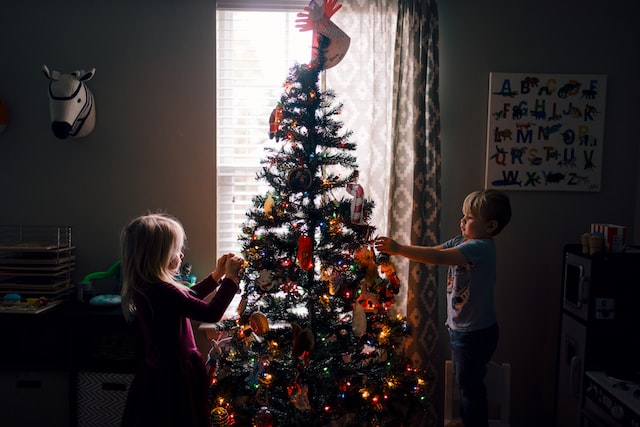
To Wrap It Up…
Christmas traditions vary from country to country, but one thing that is common is the desire for peace and goodwill among all people during this special time of year. Whether you were just curious to find out how other cultures celebrate Christmas, or you were looking to surprise someone with a custom unique to their culture, I am sure that in this list, you found some inspiration.
FAQs
1. What is Christmas?
According to the Christian religion, Christmas is the day of Christ’s birth. It used to be celebrated with a Christmas mass thus deriving the name. The best Christmas traditions around the world are spending time with family and friends, exchanging gifts, and enjoying a festive atmosphere. Some other common Christmas traditions include baking and decorating, going on shopping trips, and listening to carols.
If you’re looking for a new way to make Christmas even more special for your family, surprising them with a puppy on Christmas Eve will make the atmosphere even merrier.
2. What is the origin of Christmas trees?
The history of Christmas trees is long and complicated. There is much debate over their origins, with some people arguing that they originated in pagan ceremonies and were later adopted by the Christian Church, while others believe that they originated in Europe and were brought to America by the early settlers. The most popular theory suggests that Christmas trees were first used as a means of storing food during the winter months. Over time, the symbolism of a Christmas tree has evolved into what we see today: a symbol of joy, love, and happiness.
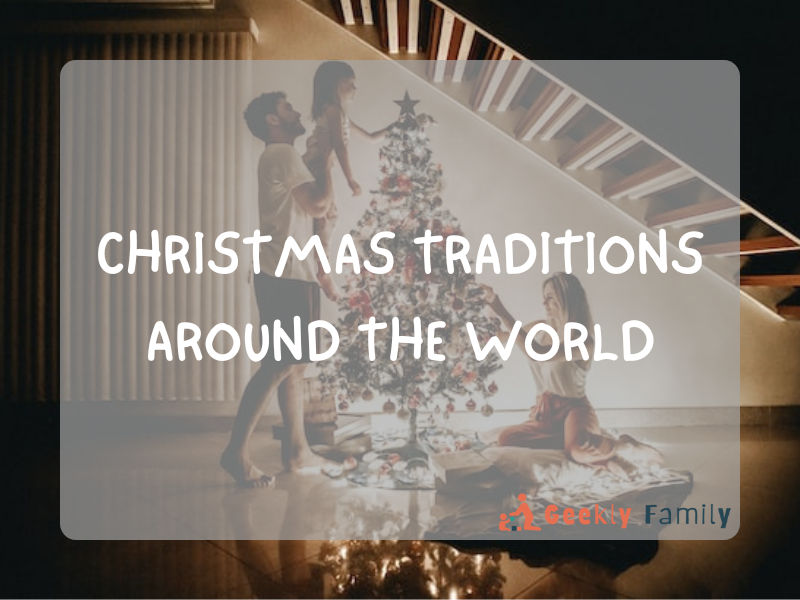

![When Do Kids Learn Multiplication and Division [And How to Help Them]](https://geekly.family/wp-content/uploads/2022/11/HOW-TO-CLEAN-BATH-TOYS-2-2-768x576.png)



